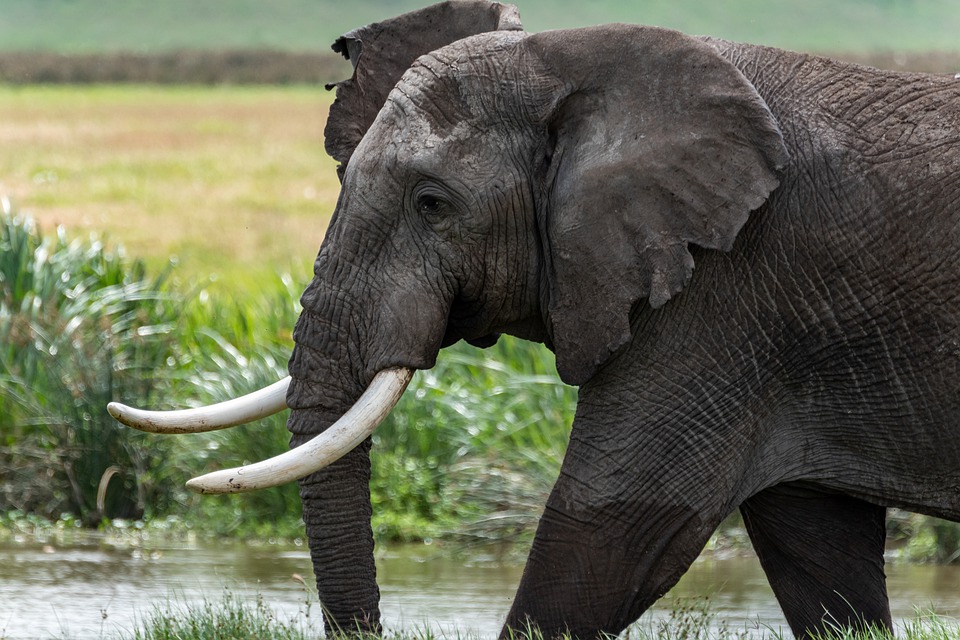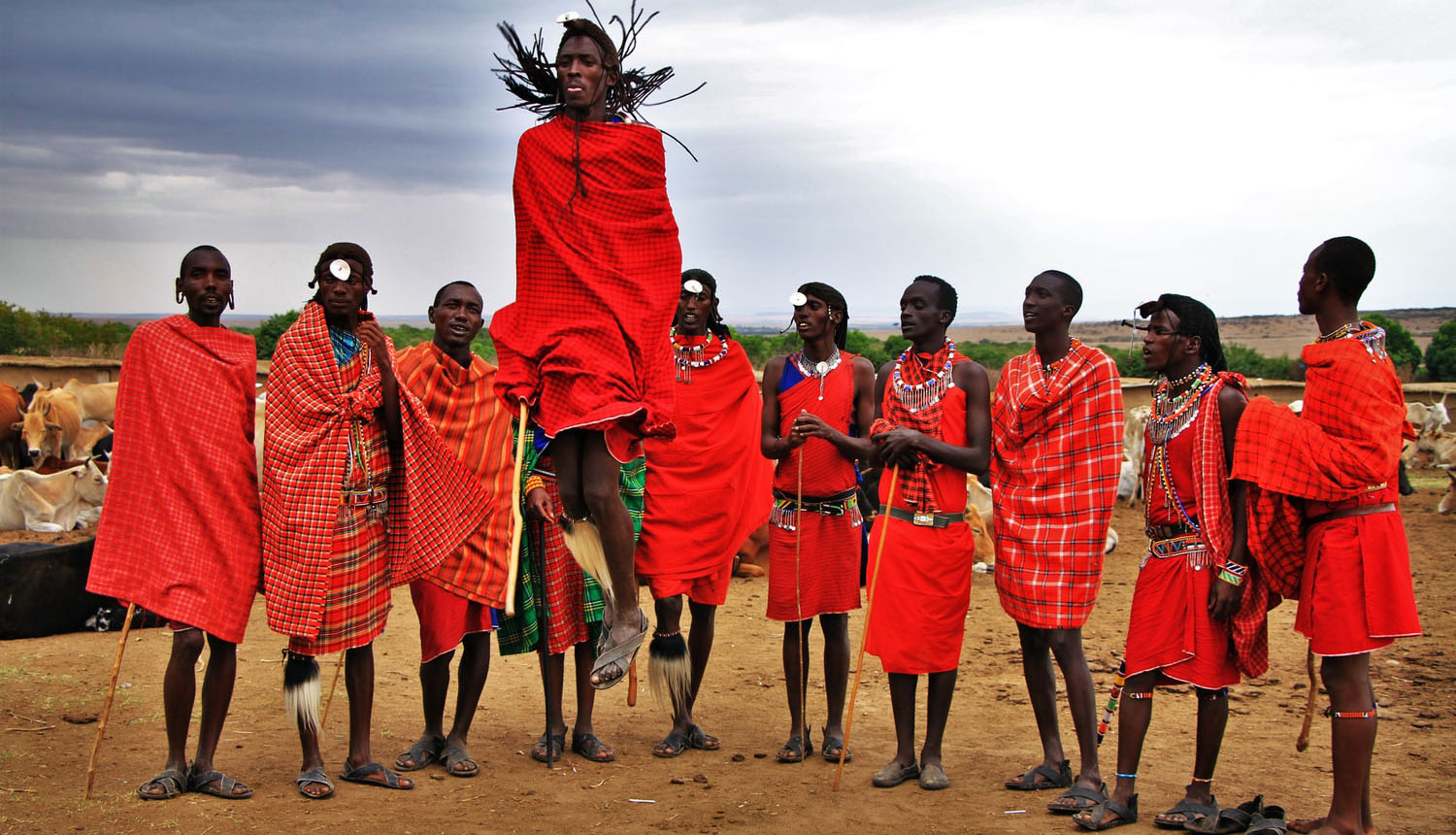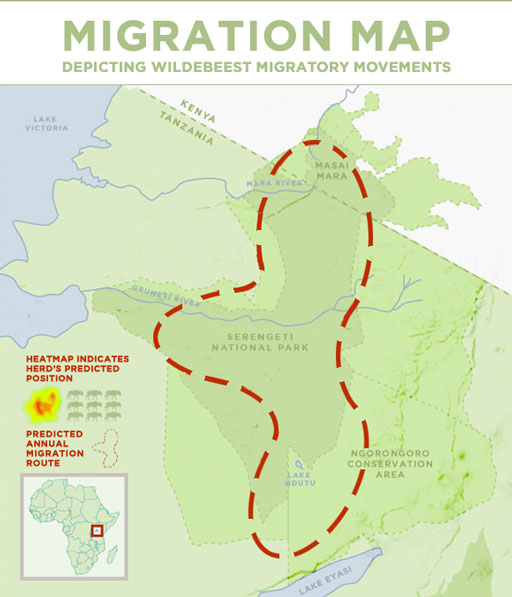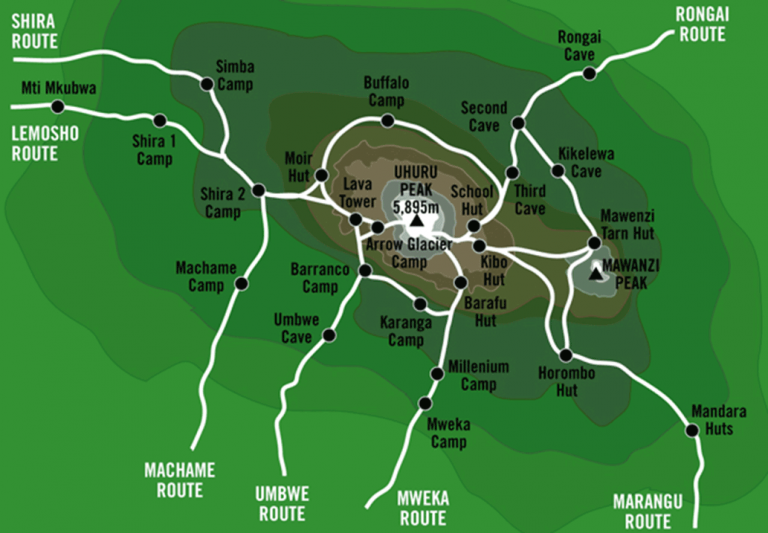A natural wonder of Africa
Home to the densest concentration of wild animals in Africa, the Ngorongoro Crater is a natural wonder that needs to be seen to be believed. The safari experience begins as you wind your way down into the vast bowl of the collapsed caldera. You are immediately able to see vast herds of buffalo, wildebeest, gazelles, and zebra moving about apparently unphased by the stalking hyenas, the prowling lions, and the opportunistic jackals. Seeing these animals is easier at the Ngorongoro Crater than anywhere else in Tanzania, and you will want to begin your game drives as early in the morning as possible while the animals are still active.
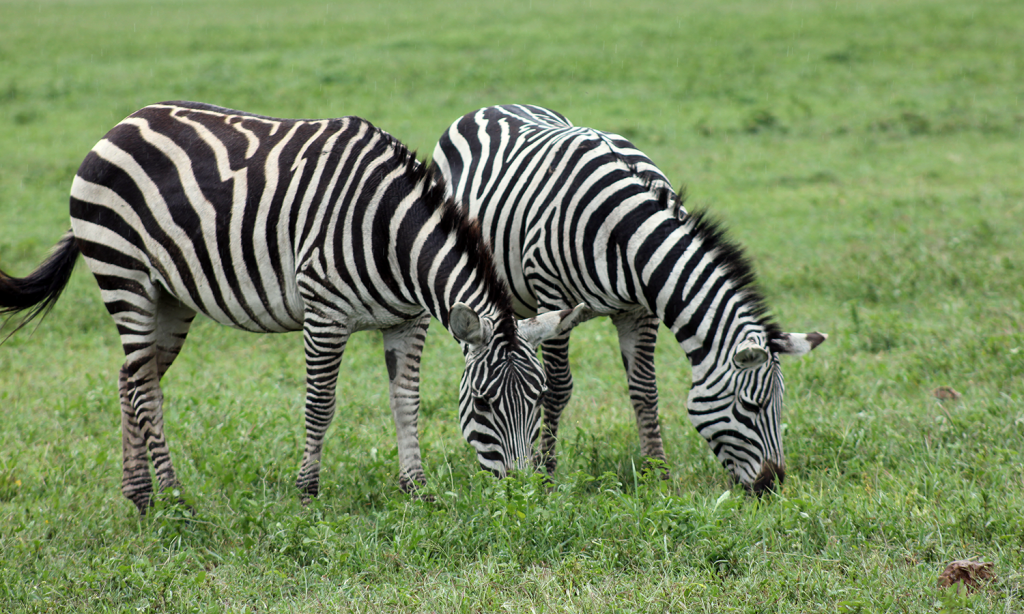
The landscape of the Ngorongoro Crater makes it perfect for game drivers, and you are guaranteed to see large concentrations of game on any Ngorongoro safari. The mineral-rich floor of this spectacular bowl is largely flat, open and covered in nutritious grasses – much to the liking of large herds of zebra and wildebeest, which graze here. These, in turn, attract predators. The wide-open expanse means that you can easily see the animals wandering across the valley of the crater. These extensive open plains are also home to herds of buffalo, Thomson’s gazelle, Grant’s gazelle and tsessebe (often called topi). In all, over 25,000 wild creatures call the Ngorongoro Crater home, and that is a whole lot of wild.
It is in the Ngorongoro Crater that you are most likely to see the entirety of the Big Five. Most commonly is the African buffalo as large herds are often seen marching across the crater floor in search of grazing or water. The least likely to be seen is the leopard, which is resident on the crater floor, but only in small numbers due to a lack of suitable habitat, and tends to be retiring and secretive. Breeding herds of elephant pass through the Ngorongoro Crater itself only rarely, though females and family herds do pass through from time to time. Ngorongoro Crater serves as something of a retirement ground for old elephant bulls. You will see a scattering of old bulls, including some of the biggest tuskers left alive in Africa today many of which sport outsized tusks. The Lerai Forest and the nearby Gorigor Swamp are the favored haunt of these mighty male tuskers, up to 70 of which are residents at any given time.
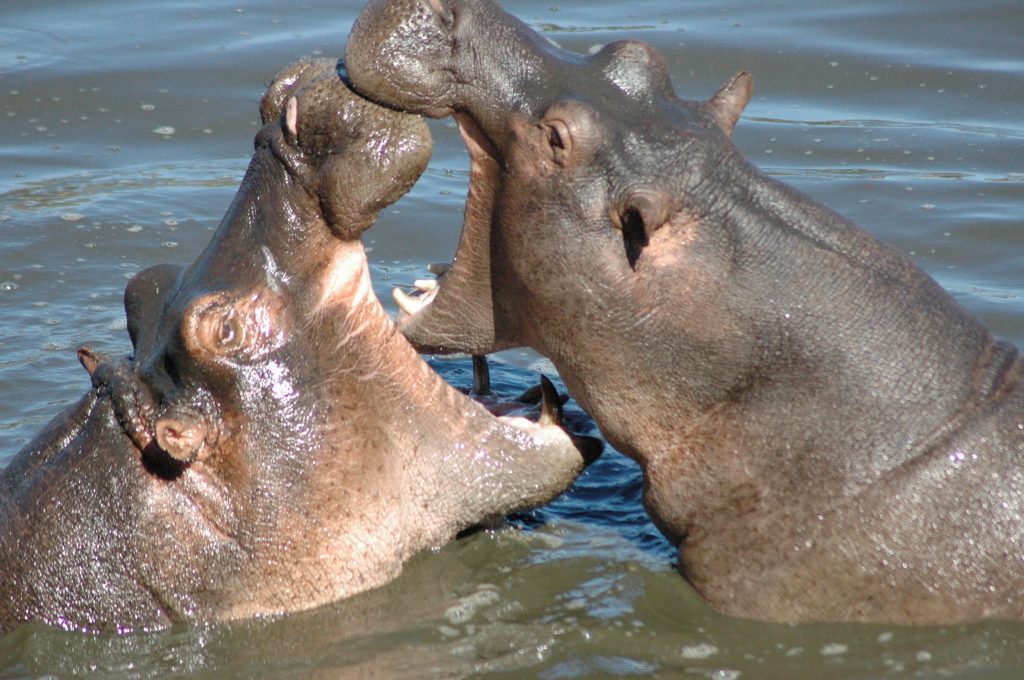
The high numbers of herbivores inside the crater support the densest populations of predators found anywhere in Africa. The reliable presence of these predators has helped make Ngorongoro Crater a popular safari attraction. Known to support a dense concentration of lions, the crater contains up to 100 permanent lion residents on the crater floor. One of the highest densities of lion prides on Earth. It would be unusual to spend a day in the crater and not see any lions. The lion population varies significantly over time, the one constant being their complete disregard of vehicles. They are generally very relaxed around vehicles, and they will hunt within yards of a vehicle, and when exhausted even seek shade beside them. Leopards are rarely inside the crater, but they are spotted higher up in the rainforests of the crater rim. There is also a small but growing number of cheetahs inside the crater, but they are mostly seen outside the crater in the Ndutu Area. Other predators are well represented too. Most populous being the Spotted hyenas often competing with the lions. Side-striped and the lovely golden jackal are often seen skulking around, whilst bat-eared foxes are a rarer sight.
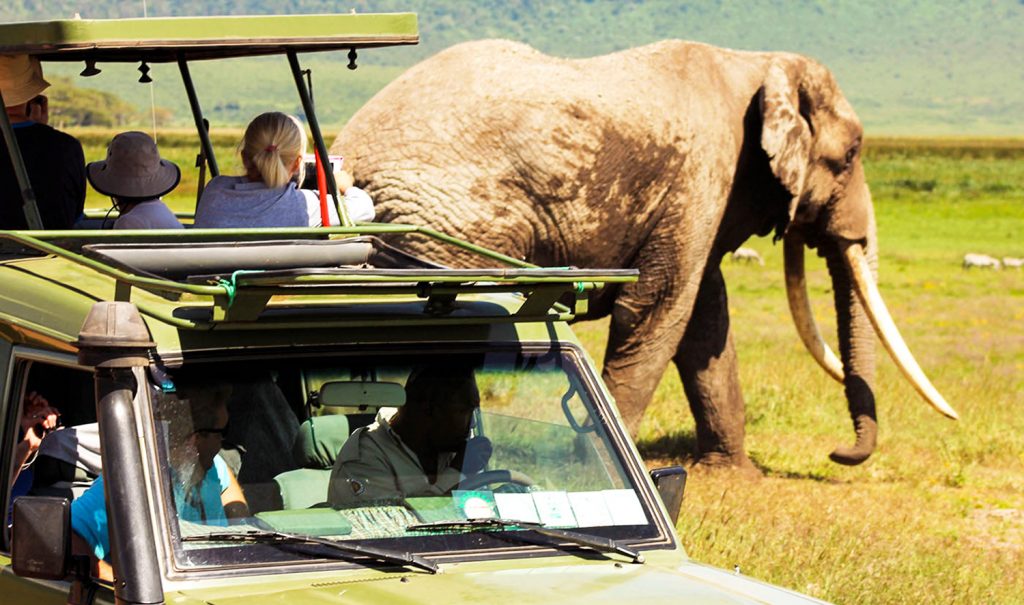
As one of Africa’s premier safari destinations, Ngorongoro Crater is one of the best places in Tanzania to see the endangered black rhino. Here you will find East Africa’s best population of black rhinos and they are often seen in open grasslands. Seeing these majestic creatures for the first time feels like being taken back to the dinosaur age. With two large horns and a hooked upper lip, these creatures are a marvel to watch. Once brought to the brink of extinction, their populations have improved due to conservation efforts.
As part of the Serengeti ecosystem, it’s natural they share some of their magic. The legendary annual Great wildebeest migration also passes through the Ngorongoro Conservation Area. More than 1 million ungulates move south into the area in December then head out north in June. Inside the crater, wildebeests and zebras are commonly seen together and/or in the company of other grazers such as the diminutive Thomson’s gazelle, the larger and longer-horned Grant’s gazelle, and the rather doleful looking topi and Coke’s hartebeest). The only surprising absentees are impalas and giraffes. You won’t find any in the crater. It is thought that this is perhaps because of the lack of open woodlands and browsing species of trees that these two tend to thrive on. For the giraffes, it is also thought they can’t enter into the crater as the sides are too steep for them to walk down. However, you’ll still be able to find them around the crater.
Birds of Ngorongoro
It is not only mammals that reside in the Ngorongoro Conservation Area. For friends of the winged ones, look no further. The birding is crazy good. The mixture of forest, canyons, grassland plains, lakes, and marshes provide habitats for a wide range of birdlife. Within the crater floor and the larger Ngorongoro Conservation Area, 550-plus bird species have been recorded.
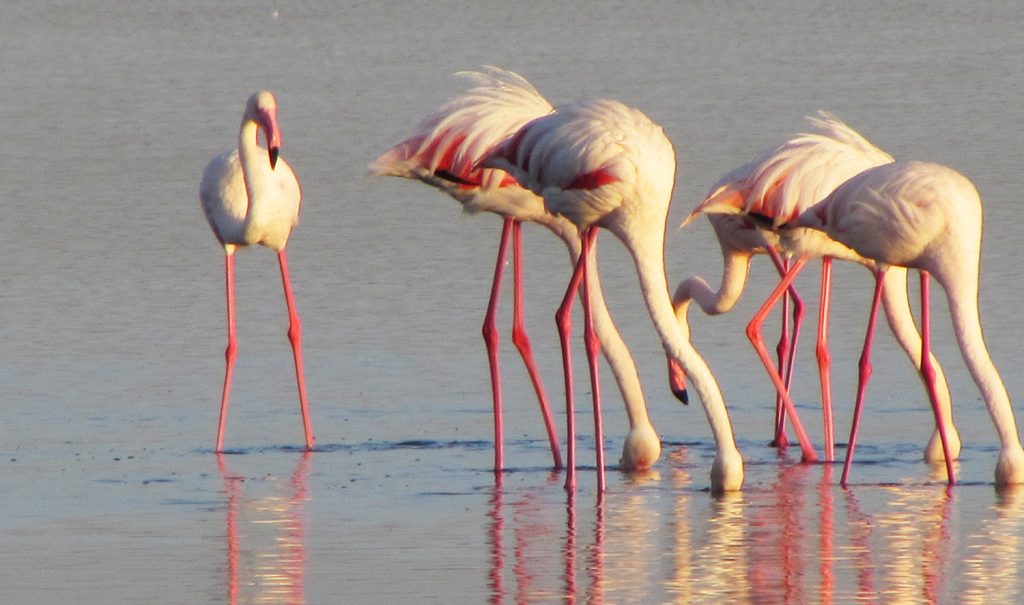
Ostriches (the world’s largest bird), kori bustards (the world’s heaviest flying bird, known for its spectacular mating dance), secretary bird… You name it; the Ngorongoro Conservation Area will not disappoint. For casual visitors, the highlight is the large flocks of lesser and greater flamingo that aggregate in the primarily alkaline Lake Magadi, tinting its margins pink from a distance The wet months from November to April witness the myriad migratory birds that take up residence at the pools. Moist grassland often supports flocks of the lovely grey crowned crane huge flocks of migrant white, black and Adbim’s storks. Other common birds include ostriches, kori bustards, crowned cranes, white-backed vultures, black kites, cattle egrets, tawny eagles, augur buzzards and many more.


